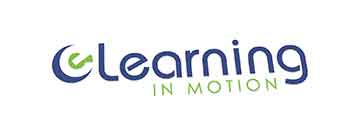The healthcare industry is constantly evolving, and it is crucial for healthcare workers to keep up with the latest developments and knowledge to provide the best possible care to their patients. However, traditional forms of continuous professional development (CPD) can be time-consuming, expensive, and may not always be accessible to all healthcare workers. Online learning using eLearning platforms has emerged as a viable and effective alternative to traditional forms of CPD. In this essay, we will explore the benefits of online learning for CPD of healthcare workers and how eLearning can improve the quality of care.
Online learning for CPD of healthcare workers using eLearning offers several advantages over traditional forms of CPD. First and foremost, eLearning provides flexibility in terms of time and location. Healthcare workers can access online courses from anywhere and at any time, allowing them to fit learning around their busy schedules. This flexibility is particularly important for healthcare workers who work irregular or long hours, making it difficult for them to attend traditional classroom-based courses.
Secondly, eLearning offers cost-effective solutions for CPD. Traditional forms of CPD, such as attending conferences or workshops, can be expensive due to travel costs, accommodation, and registration fees. Online learning using eLearning platforms eliminates these costs, making it a more cost-effective solution for CPD.
Thirdly, online learning for CPD using eLearning can provide healthcare workers with a personalized learning experience. Online courses can be tailored to meet the specific needs of individual healthcare workers, allowing them to focus on the areas where they need to improve their knowledge and skills. This personalized learning experience can help healthcare workers to learn at their own pace and in their preferred style, improving knowledge retention and the application of learning in practice.
Finally, eLearning can also help to improve the quality of care provided by healthcare workers. By providing access to the latest knowledge and best practices, healthcare workers can provide better care to their patients. Online learning can also provide healthcare workers with opportunities to practice new skills and techniques in a safe and controlled environment, allowing them to gain confidence in their abilities before applying them in practice.
Several studies have explored the benefits of online learning for CPD of healthcare workers using eLearning platforms. A systematic review of the literature by Cook et al. (2017) found that eLearning can improve knowledge and skills among healthcare workers and can lead to improved patient outcomes. Another study by Aboshady et al. (2020) found that online learning can be a viable and effective method for CPD of nurses, improving their knowledge, skills, and attitudes.
While online learning for CPD using eLearning platforms offers many benefits, there are also some challenges that need to be addressed. One of the main challenges is ensuring that healthcare workers have access to the necessary technology and infrastructure to participate in online courses. This can be a particular challenge for healthcare workers in low- and middle-income countries, where access to technology and reliable internet connections may be limited.
Another challenge is ensuring that the quality of online courses is high and that they meet the needs of healthcare workers. Online courses need to be designed in a way that is engaging and interactive, providing opportunities for healthcare workers to practice new skills and techniques. They also need to be regularly updated to ensure that they provide the latest knowledge and best practices.
As eLearning continues to gain popularity as a method for CPD in the healthcare industry, it is important for organizations and institutions to invest in the necessary resources and infrastructure to support this shift. This includes providing access to high-quality online courses, ensuring that healthcare workers have access to the necessary technology and infrastructure, and providing support and guidance to healthcare workers as they engage in online learning.
Furthermore, it is important for healthcare organizations to recognize the importance of continuous learning and to support their employees in engaging in CPD. This can include providing time and resources for online learning, offering incentives for participation in CPD, and recognizing and rewarding healthcare workers who engage in CPD.
To close this post, I would say that online learning for CPD of healthcare workers using eLearning platforms offers numerous benefits over traditional forms of CPD. It provides flexibility, is cost-effective, offers a personalized learning experience, and can help to improve the quality of care provided by healthcare workers. However, challenges such as ensuring access to technology and infrastructure and ensuring that the quality of online courses is high need to be addressed. By investing in the necessary resources and infrastructure, healthcare organizations can support their employees in engaging in CPD, ultimately leading to improved patient outcomes and better quality of care.
Thank you for reading. Please, leave a comment below. Share this post with others, like this post.


